Remote Sensing and AI Coupled Approach for Large-Scale Archaeological Mapping in the Andean Arid Highlands: Case Study in Altos Arica, Chile
Highlights
- CNN-based detection proves effective in identifying archaeological structures like roundhouses and corrals in the Azapa Valley of Chilean highlands, even with limited training data.
- Integrating high-resolution satellite imagery with AI enables efficient large scale archaeological mapping across rugged and hard-to-access terrain.
- GeoAI tools help reveal and elevate lesser-known archaeological sites and fostering the “heritagization” process of shared cultural landscapes in Bolivia, Chile, and Peru.
- This method offers a scalable foundation for heritage protection and landscape management, with strong potential for applications in similarly challenging regions worldwide.
Abstract
1. Introduction
1.1. Remote Sensing and AI in Archaeology
1.2. Applications in Andean Arid Highlands
1.3. Research Gaps
1.4. Altos de Arica Case Study
2. Materials and Methods
2.1. Archaeological Data and Features Annotation
2.2. AI Training Dataset Generation
2.3. Classification Algorithm
3. Results
Model Assessment and Validation
4. Discussion
Supplementary Materials
Author Contributions
Funding
Data Availability Statement
Acknowledgments
Conflicts of Interest
Abbreviations
| AI | Artificial Intelligence |
| CNN | Convolutional Neural Networks |
| DEM | Digital Elevation Model |
| FN | False Negative |
| FP | False Positive |
| DL | Deep Learning |
| GIS | Geographical Information System |
| ML | Machine Learning |
| NDVI | Normalized Difference Vegetation Index |
| OoI | Objects of Interest |
| RS | Remote Sensing |
| TN | True Negative |
| TP | True Positive |
References
- Espinoza, J.C.; Garreaud, R.; Poveda, G.; Arias, P.A.; Molina-Carpio, J.; Masiokas, M.; Viale, M.; Scaff, L. Hydroclimate of the Andes part I: Main climatic features. Front. Earth Sci. 2020, 8, 64. [Google Scholar] [CrossRef]
- Borsdorf, A.; Stadel, C. The Andes. A Geographical Portrait; Springer: New York, NY, USA, 2015. [Google Scholar]
- Agüero, C.; Uribe, M. Las sociedades Formativas de San Pedro de Atacama: Asentamiento, cronología y proceso. Estud. Atacameños 2011, 42, 53–78. [Google Scholar] [CrossRef]
- Saintenoy, T.; Llobera, M.; Thiéry, N.; Crespo Fernández, M.; Fábrega-Álvarez, P.; Santos, R. Topological insights into the diachrony of ancient road networks: Exploratory predictive modelling in the Andean highlands. J. Archaeol. Sci. 2025, 174, 106125. [Google Scholar] [CrossRef]
- Zimmer-Dauphinee, J.; Wernke, S.A. Semantic Segmentation and Classification of Active and Abandoned Agricultural Fields through Deep Learning in the Southern Peruvian Andes. Remote Sens. 2024, 16, 3546. [Google Scholar] [CrossRef]
- Lazzari, M.; Oltean, I.; Oyaneder Rodríguez, A.; Scattolin, M.C.; Pereyra Domingorena, L. Andean Landscape Legacies: Comprehensive Remote Sensing Mapping and GIS Analysis of Long-Term Settlement and Land Use for Sustainable Futures (NW Argentina). Remote Sens. 2024, 16, 3795. [Google Scholar] [CrossRef]
- Luo, L.; Wang, X.; Guo, H.; Lasaponara, R.; Zong, X.; Masini, N.; Wang, G.; Shi, P.; Khatteli, H.; Chen, F.; et al. Airborne and spaceborne remote sensing for archaeological and cultural heritage applications: A review of the century (1907–2017). Remote Sens. Environ. 2019, 232, 111280. [Google Scholar] [CrossRef]
- Masini, N.; Coluzzi, R.; Lasaponara, R. On the Airborne Lidar Contribution in Archaeology: From Site Identification to Landscape Investigation. In Laser Scanning, Theory and Application; InTech Open: London, UK, 2011; pp. 263–290. [Google Scholar]
- Lasaponara, R.; Masini, N. Satellite remote sensing in archaeology: Past, present and future perspectives. J. Archaeol. Sci. 2011, 38, 1995–2002. [Google Scholar] [CrossRef]
- Argyrou, A.; Agapiou, A. A review of artificial intelligence and remote sensing for archaeological research. Remote Sens. 2022, 14, 6000. [Google Scholar] [CrossRef]
- Fiorucci, M.; Verschoof-van der Vaart, W.B.; Soleni, P.; Le Saux, B.; Traviglia, A. Deep learning for archaeological object detection on LiDAR: New evaluation measures and insights. Remote Sens. 2022, 14, 1694. [Google Scholar] [CrossRef]
- Phelan, K.; Riordan, D. Detection of Ringforts from Aerial Photography Using Machine Learning. In Proceedings of the 31st Irish Signals and Systems Conference (ISSC), Letterkenny, Ireland, 11–12 June 2020; pp. 1–6. [Google Scholar] [CrossRef]
- Trotter, E.F.L.; Fernandes, A.C.M.; Fibæk, C.S.; Keßler, C. Machine learning for automatic detection of historic stone walls using LiDAR data. Int. J. Remote Sens. 2022, 43, 2185–2211. [Google Scholar] [CrossRef]
- Guyot, A.; Lennon, M.; Lorho, T.; Hubert-Moy, L. Combined Detection and Segmentation of Archaeological Structures from LiDAR Data Using a Deep Learning Approach. J. Comput. Appl. Archaeol. 2021, 4, 1. [Google Scholar] [CrossRef]
- McCoy, M.D. Geospatial Big Data and archaeology: Prospects and problems too great to ignore. J. Archaeo-Log. Sci. 2017, 84, 74–94. [Google Scholar] [CrossRef]
- Doyle, C.; Luzzadder-Beach, S.; Beach, T. Advances in remote sensing of the Early Anthropocene in tropical wetlands: From biplanes to lidar and machine learning. Prog. Phys. Geogr. Earth Environ. 2023, 47, 293–312. [Google Scholar] [CrossRef]
- Suh, J.W.; Ouimet, W. Mapping stone walls in Northeastern USA using deep learning and LiDAR data. GIScience Remote Sens. 2023, 60, 2196117. [Google Scholar] [CrossRef]
- Character, L.; Ortiz, A., Jr.; Beach, T.; Luzzadder-Beach, S. Archaeological machine learning for shipwreck detection using lidar and sonar. Remote Sens. 2021, 13, 1759. [Google Scholar] [CrossRef]
- Character, L.; Beach, T.; Luzzadder-Beach, S.; Cook, D.; Schank, C.; Valdez, F., Jr.; Mallner, M. Machine learning for cave entrance detection in a Maya archaeological area. Phys. Geogr. 2023, 45, 416–438. [Google Scholar] [CrossRef]
- Bickler, S.H. Machine learning arrives in archaeology. Adv. Archaeol. Pract. 2021, 9, 186–191. [Google Scholar] [CrossRef]
- Rosenzweig, M.S. Confronting the present: Archaeology in 2019. Am. Anthropol. 2020, 122, 284–305. [Google Scholar] [CrossRef]
- Davis, D.S. Object-based image analysis: A review of developments and future directions of automated feature detection in landscape archaeology. Archaeol. Prospect. 2018, 25, 155–163. [Google Scholar] [CrossRef]
- Davis, D.S. Defining what we study: The contribution of machine automation in archaeological research. Digit. Appl. Archaeol. Cult. Herit. 2020, 18, e00152. [Google Scholar] [CrossRef]
- Sevara, C.; Pregesbauer, M.; Doneus, M.; Verhoeven, G.; Trinks, I. Pixel versus object–a comparison of strategies for the semi-automated mapping of archaeological features using airborne laser scanning data. J. Archaeol. Sci. Rep. 2016, 5, 485–498. [Google Scholar]
- Landauer, J.; Klassen, S.; Wijker, A.P.; van der Kroon, J.; Jaszkowski, A.; Verschoof-van der Vaart, W.B. Beyond the Greater Angkor Region: Automatic large-scale mapping of Angkorian-period reservoirs in satellite imagery using deep learning. PLoS ONE 2025, 20, e0320452. [Google Scholar] [CrossRef] [PubMed]
- Bundzel, M.; Jaščur, M.; Kováč, M.; Lieskovský, T.; Sinčák, P.; Tkáčik, T. Semantic Segmentation of Airborne LiDAR Data in Maya Archaeology. Remote Sens. 2020, 12, 3685. [Google Scholar] [CrossRef]
- Berganzo-Besga, I.; Orengo, H.A.; Lumbreras, F.; Carrero-Pazos, M.; Fonte, J.; Vilas-Estévez, B. Hybrid MSRM-Based Deep Learning and Multitemporal Sentinel 2-Based Machine Learning Algorithm Detects Near 10k Archaeological Tumuli in North-Western Iberia. Remote Sens. 2021, 13, 4181. [Google Scholar] [CrossRef]
- Landauer, J.; Maddison, S.; Fontana, G.; Posluschny, A.G. Archaeological Site Detection: Latest Results from a Deep Learning Based Europe Wide Hillfort Search. J. Comput. Appl. Archaeol. 2025, 8, 42–58. [Google Scholar] [CrossRef]
- Borie, C.; Parcero-Oubiña, C.; Kwon, Y.; Salazar, D.; Flores, C.; Olguín, L.; Andrade, P. Beyond Site Detection: The Role of Satellite Remote Sensing in Analysing Archaeological Problems. A Case Study in Lithic Resource Procurement in the Atacama Desert, Northern Chile. Remote Sens. 2019, 11, 869. [Google Scholar] [CrossRef]
- Mader, C.; Godde, P.; Behl, M.; Binder, C.; Hägele, E.; Isla, J.; Leceta, F.; Lyons, M.; Marsh, E.; Odenthal, R.; et al. An integrative approach to ancient agricultural terraces and forms of dependency: The case of Cutamalla in the prehispanic Andes. Front. Environ. Archaeol. 2024, 3, 1328315. [Google Scholar] [CrossRef]
- Sakai, M.; Sakurai, A.; Lu, S.; Olano, J.; Albrecht, C.M.; Hamann, H.F.; Freitag, M. AI-Accelerated Nazca Survey Nearly Doubles the Number of Known Figurative Geoglyphs and Sheds Light on Their Purpose. Proc. Natl. Acad. Sci. USA 2024, 121, e2407652121. [Google Scholar] [CrossRef]
- Perez-Torres, W.I.; Uman-Flores, D.A.; Quispe-Quispe, A.B.; Palomino-Quispe, F.; Bezerra, E.; Leher, Q.; Paixão, T.; Alvarez, A.B. Exploratory Analysis Using Deep Learning for Water-Body Segmentation of Peru’s High-Mountain Remote Sensing Images. Sensors 2024, 24, 5177. [Google Scholar] [CrossRef]
- Guo, J.; Zimmer-Dauphinee, J.R.M.; Nieusma, J.M.; Lu, S.; Liu, Q.; Deng, R.; Cui, C.; Yue, J.; Lin, Y.; Yao, T.; et al. DeepAndes: A Self-Supervised Vision Foundation Model for Multi-Spectral Remote Sensing Imagery of the Andes. Computer Vision and Pattern Recognition. arXiv 2025, arXiv:2504.20303. [Google Scholar] [CrossRef]
- Arkush, E.; Kohut, L.E.; Housse, R.; Smith, R.D.; Wernke, S.A. A new view of hillforts in the Andes: Expanding coverage with systematic imagery survey. Antiquity 2024, 98, 172–192. [Google Scholar] [CrossRef]
- Zimmer-Dauphinee, J.; VanValkenburgh, P.; Wernke, S.A. Eyes of the machine: AI-assisted satellite archaeological survey in the Andes. Antiquity 2024, 98, 245–259. [Google Scholar] [CrossRef]
- Jackson, D.; Méndez, C. Hallazgo o búsqueda de sitios paleoindios: Problemas de investigación en torno a los primeros poblamientos. Rev. Werken 2004, 5, 9–14. [Google Scholar]
- Saintenoy, T.; Ajata, R.; Guevara, A.L.R.; Sepulveda, M. Arqueología del territorio aldeano prehispánico tardío en los Altos de Arica: Aportes de la fotointerpretación satelital para el estudio regional de la cuenca alta de Azapa. Estud. Atacameños. Arqueol. Antropol. Surandinas 2017, 44, 85–110. [Google Scholar] [CrossRef][Green Version]
- Osorio, D.; Jackson, D.; Ugalde, P.C.; Latorre, C.; De Pol-Holz, R.; Santoro, C.M. Hakenasa Cave and its relevance for the peopling of the southern Andean Altiplano. Antiquity 2011, 85, 1194–1208. [Google Scholar] [CrossRef]
- LeFebvre, R.P. Hakenasa: The archaeology of a rock shelter in the altiplano of northern Chile. Available from ProQuest Dissertations and Theses Global. (305154028). 2004. Available online: https://www.proquest.com/dissertations-theses/hakenasa-archaeology-rock-shelter-altiplano/docview/305154028/se-2 (accessed on 10 May 2024).
- Haboucha, R.; Jofré, D. Safeguarding Indigenous Heritage in the Chilean Atacama Desert: Negotiating Identity Claims and Community Perceptions of Long-term Climate Change. Herit. Soc. 2021, 14, 216–241. [Google Scholar] [CrossRef]
- Romero, H.; Méndez, M.; Smith, P. Mining development and environmental injustice in the Atacama Desert of northern Chile. Environ. Justice 2012, 5, 70–76. [Google Scholar] [CrossRef]
- Grosjean, A.; Santoro, C.M.; Thompson, L.G.; Núñez, L.; Standen, V.G. Mid-Holocene Climate and Culture Change in the South Central Andes. In Climate Change and Cultural Dynamics; Anderson, D.G., Maasch, K.A., Sandweiss, D.H., Eds.; Academic Press: Cambridge, MA, USA, 2007; pp. 51–115. [Google Scholar] [CrossRef]
- Méndez-Quirós, P.; Jackson, D. Urban expansion in northern Chile and its implications for cultural heritage. J. Anthropol. Archaeol. 2005, 24, 408–423. [Google Scholar]
- Payntar, N.D. A Multi-Temporal Analysis of Archaeological Site Destruction using Landsat Satellite Data and Machine Learning, Moche Valley, Peru. J. Comput. Cult. Herit. 2023, 16, 3. [Google Scholar] [CrossRef]
- Branca, D.; Haller, A. Urbanization, Touristification and Verticality in the Andes: A Profile of Huaraz, Peru. Sustainability 2021, 13, 6438. [Google Scholar] [CrossRef]
- Méndez-Quirós, P.; Barceló, J.A.; Santana-Sagredo, F.; Uribe, M. Modeling long-term human population dynamics using kernel density analysis of 14c data in the Atacama desert (18o–21oS). Radiocarbon 2023, 65, 665–679. [Google Scholar] [CrossRef]
- Rothhammer, F.; Santoro, C.M. El Desarrollo Cultural En El Valle De Azapa, Extremo Norte De Chile Y Su Vinculación Con Los Desplazamientos Poblacionales Altiplánicos. Lat. Am. Antiq. 2001, 12, 59–66. [Google Scholar] [CrossRef]
- Núñez, L.; Santoro, C. El tránsito Arcaico-Formativo en la Circumpuna y Valles Occidentales del Centro Sur Andino: Hacia los cambios “neolíticos”. Chungara 2011, 43, 487–530. [Google Scholar] [CrossRef]
- Núñez, L.; Dillehay, T.D. Movilidad Migratoria, Armonía Social y Desarrollo en los Andes Meridionales: El Caso de la Sociedad San Pedro de Atacama; Universidad Católica del Norte: Antofagasta, Chile, 1995; ISBN 9567012261. [Google Scholar]
- True, D.L.; Núñez, A.L.; Núñez, H.P. Archaeological Investigations in Northern Chile: Project Tarapaca—Preceramic Resources. Am. Antiq. 1970, 35, 170–184. [Google Scholar] [CrossRef]
- Uribe, M.; Gallardo, F. Tiwanaku en Chile: Nuevas evidencias, nuevos debates. Boletín Mus. Chil. Arte Precolomb. 2004, 13, 35–50. [Google Scholar]
- Saintenoy, T. Beyond Inca roads: The Redes Andinas project explores complex palimpsests of Andean Road networks. Antiquity 2024, 98, e22. [Google Scholar] [CrossRef]
- Santoro, C.; Uribe, M. Inca Imperial Colonization in Northern Chile. In The Oxford Handbook of the Incas; Sonia, A., Covey, A., Eds.; Oxford University Press: Oxford, UK, 2018; pp. 355–374. [Google Scholar] [CrossRef]
- Hidalgo, J.; Focacci, G. Historia prehispánica de Arica y el valle de Azapa. In Chungara: Revista de Antropología Chilena No. 16/17, actas x Congreso Nacional de Arqueologia Chilena (Octubre 1986); Universidad de Tarapaca: Arica, Chile, 1986; pp. 137–147. Available online: https://www.jstor.org/stable/27801889 (accessed on 4 September 2025).
- Saintenoy, T.; González Estefane, F.; Uribe Rodríguez, M. Desde la perspectiva de la isla: El ordenamiento territorial incaico en la transecta andina Arica-Carangas (18° S). Lat. Am. Antiq. 2019, 30, 393–414. [Google Scholar] [CrossRef]
- Muñoz, I.; Chacama, J. Transformación del paisaje social en Arica, Norte de Chile: De pescadores arcaicos a agricultores incipientes. Estud. Atacameños 2012, 44, 123–140. [Google Scholar] [CrossRef]
- Housse, R. Territorialité et Fortifications Entre la Côte Pacifique et l’Altiplano Méridional Andin à l’Intermédiaire Récent (1100–1450 Apr. J.-C.); Archéologie et Préhistoire; Université Panthéon-Sorbonne: Paris, France, 2021; Available online: https://theses.hal.science/tel-03519307v1 (accessed on 4 September 2025).
- Trier, Ø.D.; Cowley, D.; Waldeland, A.U. Using deep neural networks on airborne laser scanning data: Results from a case study of semi-automatic mapping of archaeological topography on Arran, Scotland. Archaeol. Prospect. 2019, 26, 165–175. [Google Scholar] [CrossRef]
- Verschoof-van der Vaart, W.B.; Landauer, J. Using CarcassonNet to automatically detect and trace hollow roads in LiDAR data from The Netherlands. J. Cult. Herit. 2021, 47, 143–154. [Google Scholar] [CrossRef]
- Esri. ArcGIS Pro, Version 2.9; Environmental Systems Research Institute: Redlands, CA, USA, 2021.
- Kokalj, Ž.; Džeroski, S.; Šprajc, I.; Štajdohar, J.; Draksler, A.; Somrak, M. Machine learning-ready remote sensing data for Maya archaeology. Sci. Data 2023, 10, 558. [Google Scholar] [CrossRef]
- Woo, S.; Debnath, S.; Hu, R.; Chen, X.; Liu, Z.; Kweon, I.S.; Xie, S. ConvNeXt V2: Co-Designing and Scaling ConvNets with Masked Autoencoders. In Proceedings of the IEEE/CVF Conference on Computer Vision and Pattern Recognition (CVPR), Vancouver, BC, Canada, 17–24 June 2023; pp. 16133–16142. [Google Scholar]
- Szegedy, C.; Liu, W.; Jia, Y.; Sermanet, P.; Reed, S.; Anguelov, D.; Erhan, D.; Vanhoucke, V.; Rabinovich, A. Going Deeper with Convolutions. In Proceedings of the IEEE Conference on Computer Vision and Pattern Recognition (CVPR), Boston, MA, USA, 7–12 June 2015; pp. 1–9. [Google Scholar] [CrossRef]
- Zhong, Z.; Zheng, L.; Kang, G.; Li, S.; Yang, Y. Random Erasing Data Augmentation. Proc. AAAI Conf. Artif. Intell. 2020, 34, 13001–13008. [Google Scholar] [CrossRef]
- Howard, J.; Gugger, S. Fastai: A Layered API for Deep Learning. Information 2020, 11, 108. [Google Scholar] [CrossRef]
- Paszke, A.; Gross, S.; Massa, F.; Lerer, A.; Bradbury, J.; Chanan, G.; Killeen, T.; Lin, Z.; Gimelshein, N.; Antiga, L.; et al. PyTorch: An Imperative Style, High-Performance Deep Learning Library. arXiv 2019, arXiv:1912.01703. [Google Scholar]
- Powers, D.M. Evaluation: From precision, recall and F-measure to ROC, informedness, markedness and correlation. arXiv 2020, arXiv:2010.16061. [Google Scholar] [CrossRef]
- Matthews, B.W. Comparison of the predicted and observed secondary structure of T4 Phage Lysozyme. Biochim. Biophisica Acta 1974, 405, 442–451. [Google Scholar] [CrossRef]
- Baldi, P.; Brunak, S.; Chauvin, Y.; Andersen, C.A.; Nielsen, H. Assessing the accuracy of prediction algorithms for classification: An overview. Bioinformatics 2000, 16, 412–424. [Google Scholar] [CrossRef]
- Chicco, D.; Jurman, G. The advantages of the Matthews correlation coefficient (MCC) over F1 score and accuracy in binary classification evaluation. BMC Genom. 2020, 21, 6. [Google Scholar] [CrossRef]
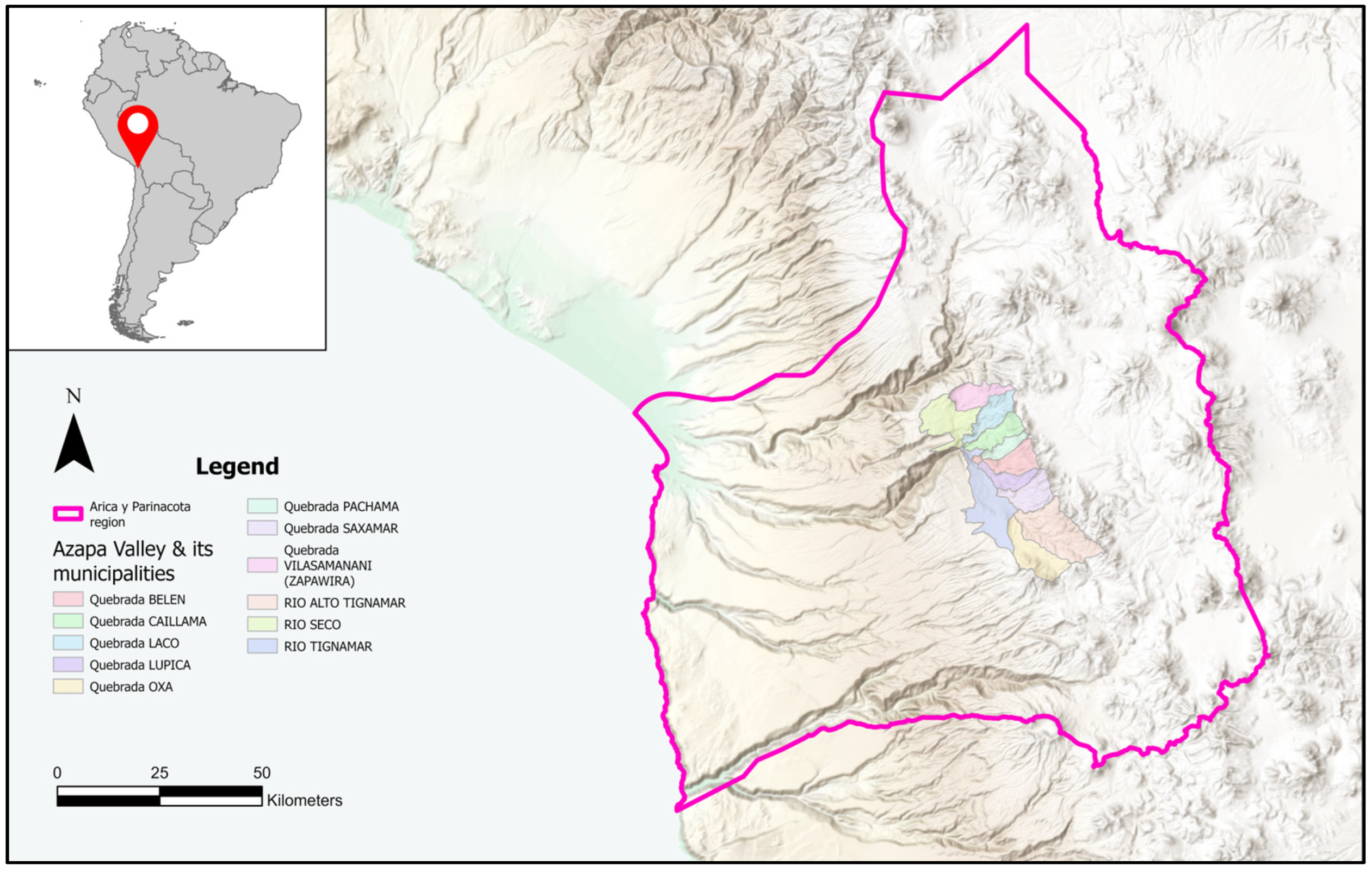
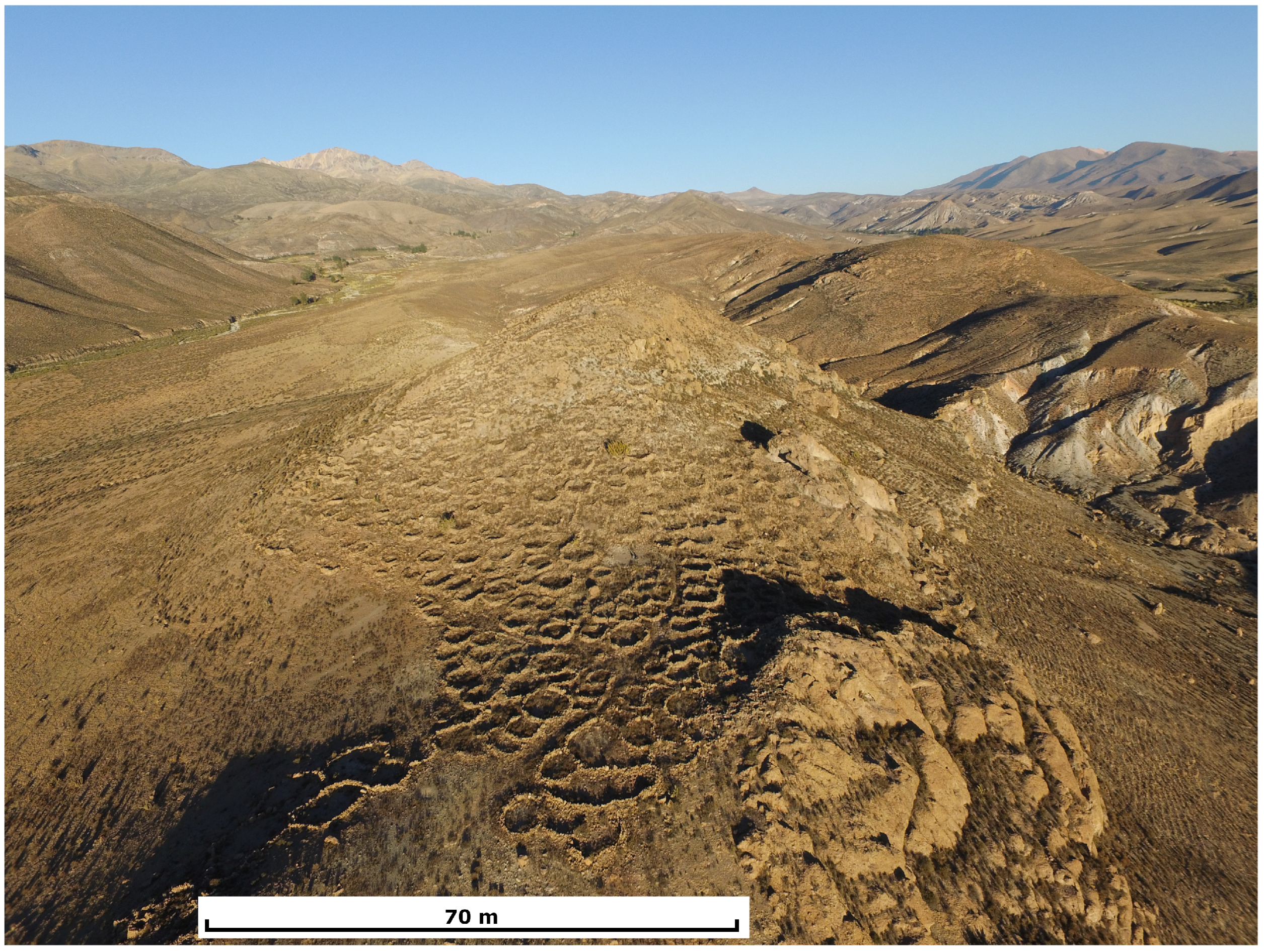

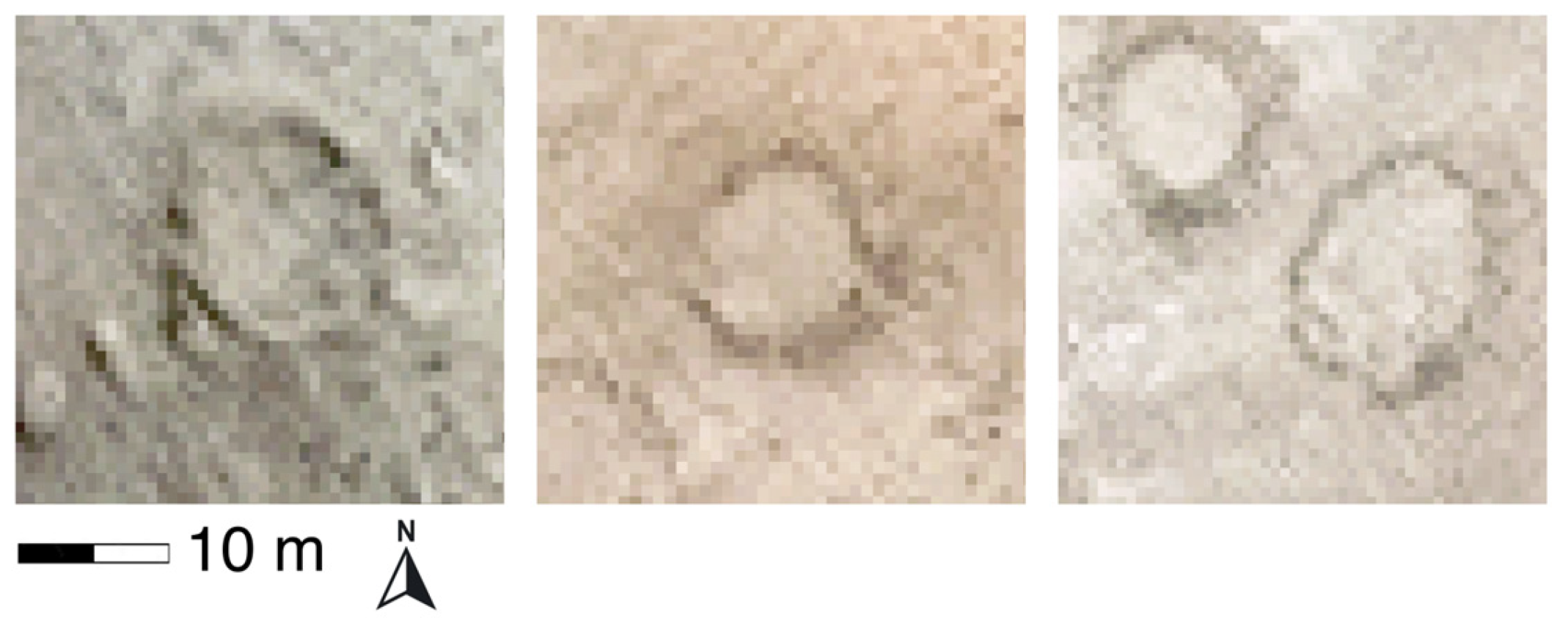
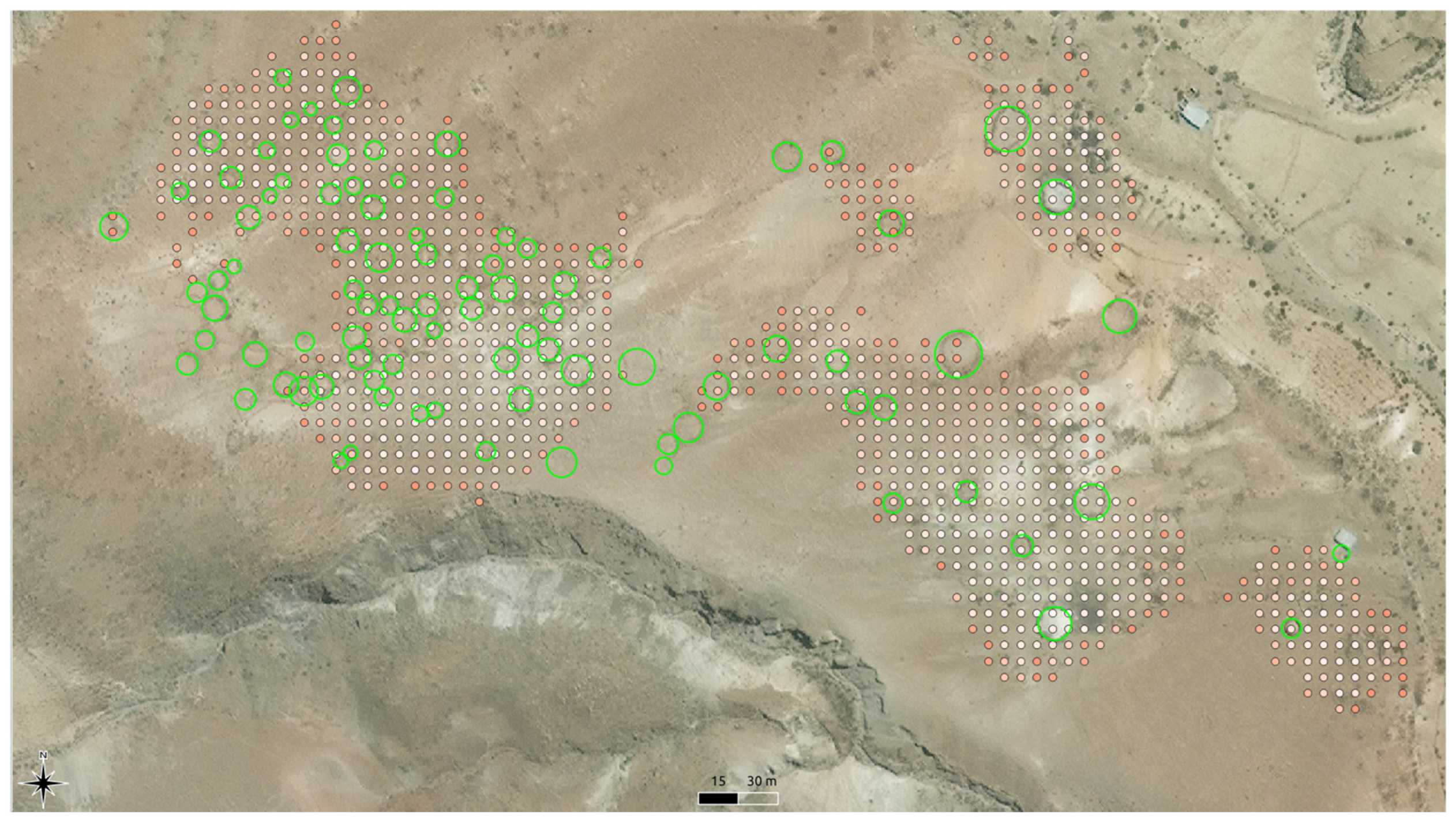
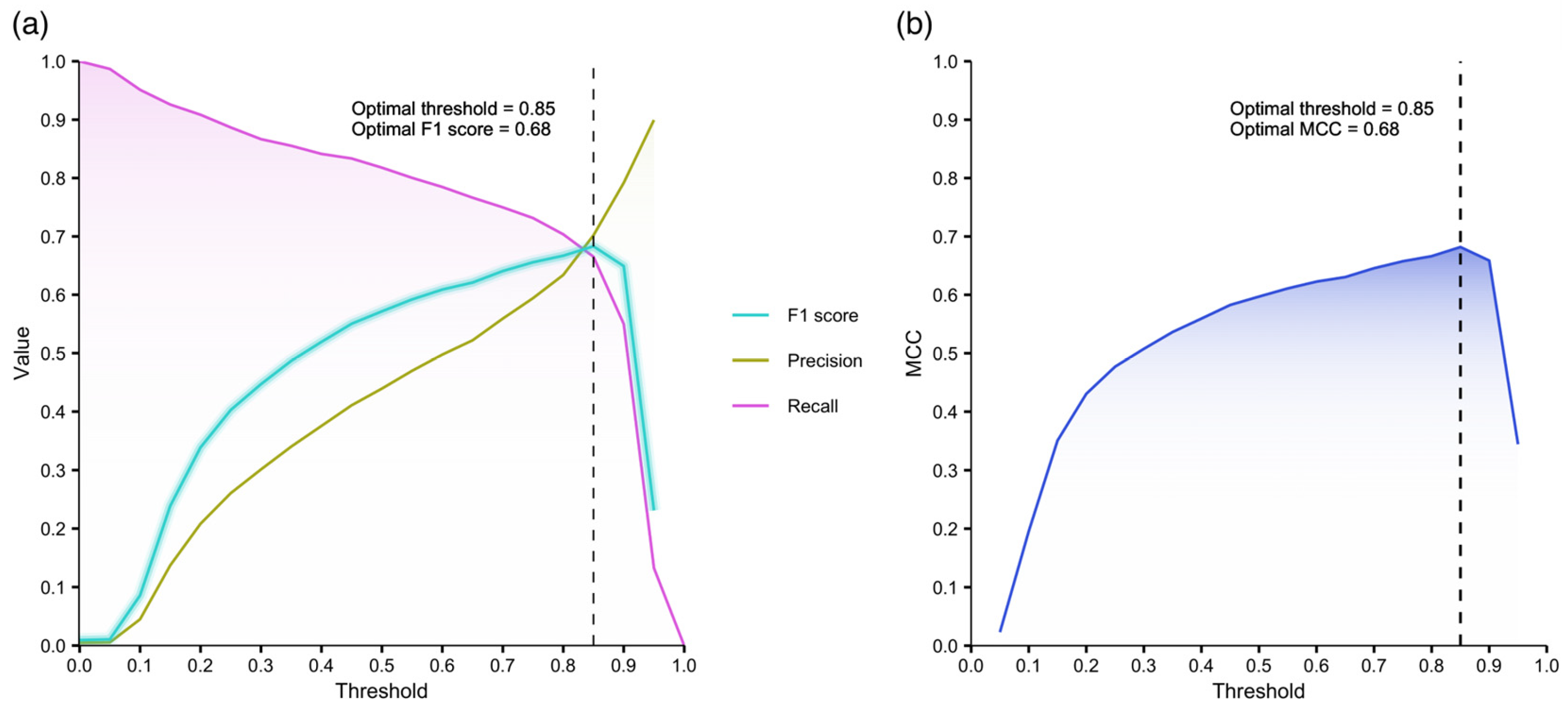
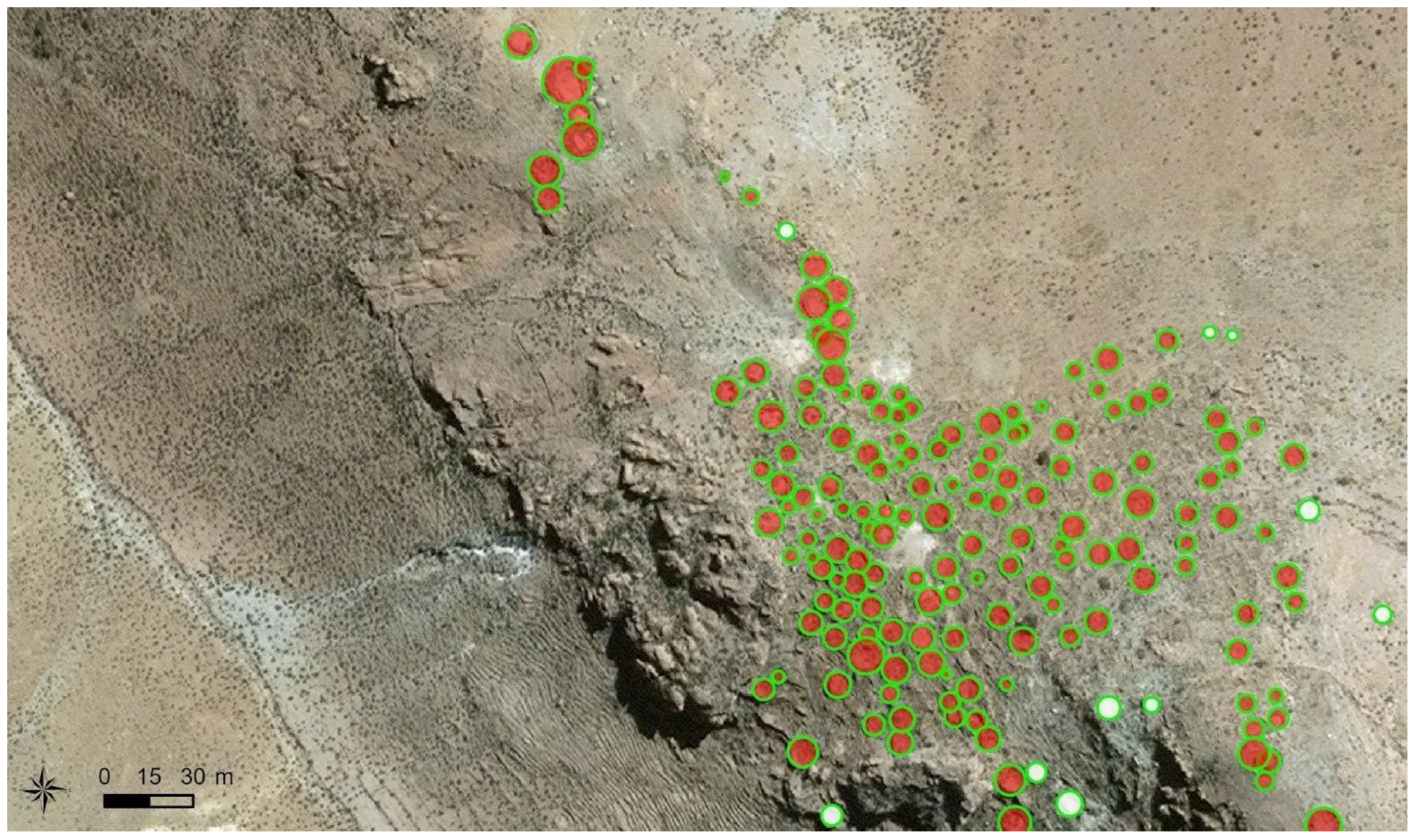
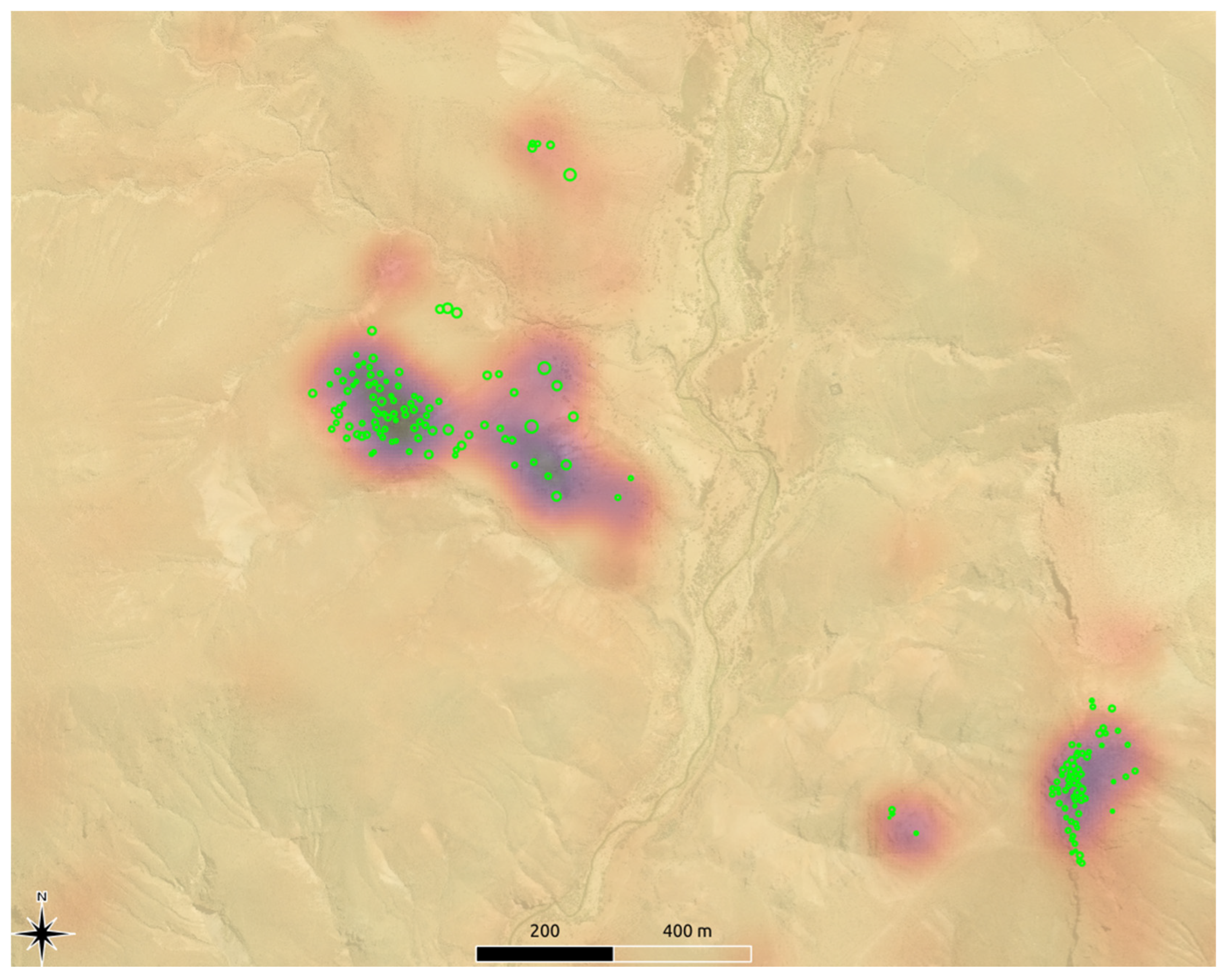
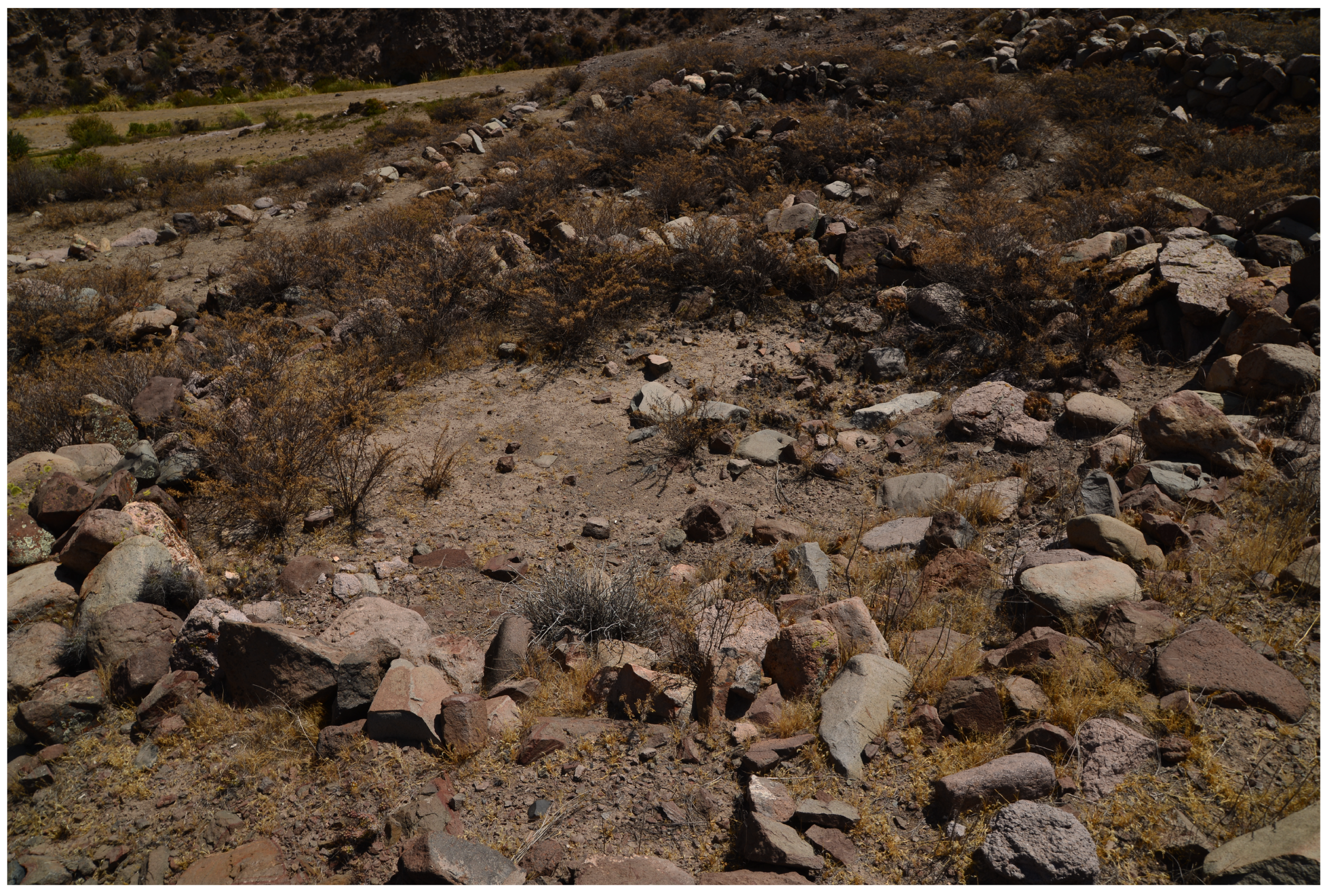
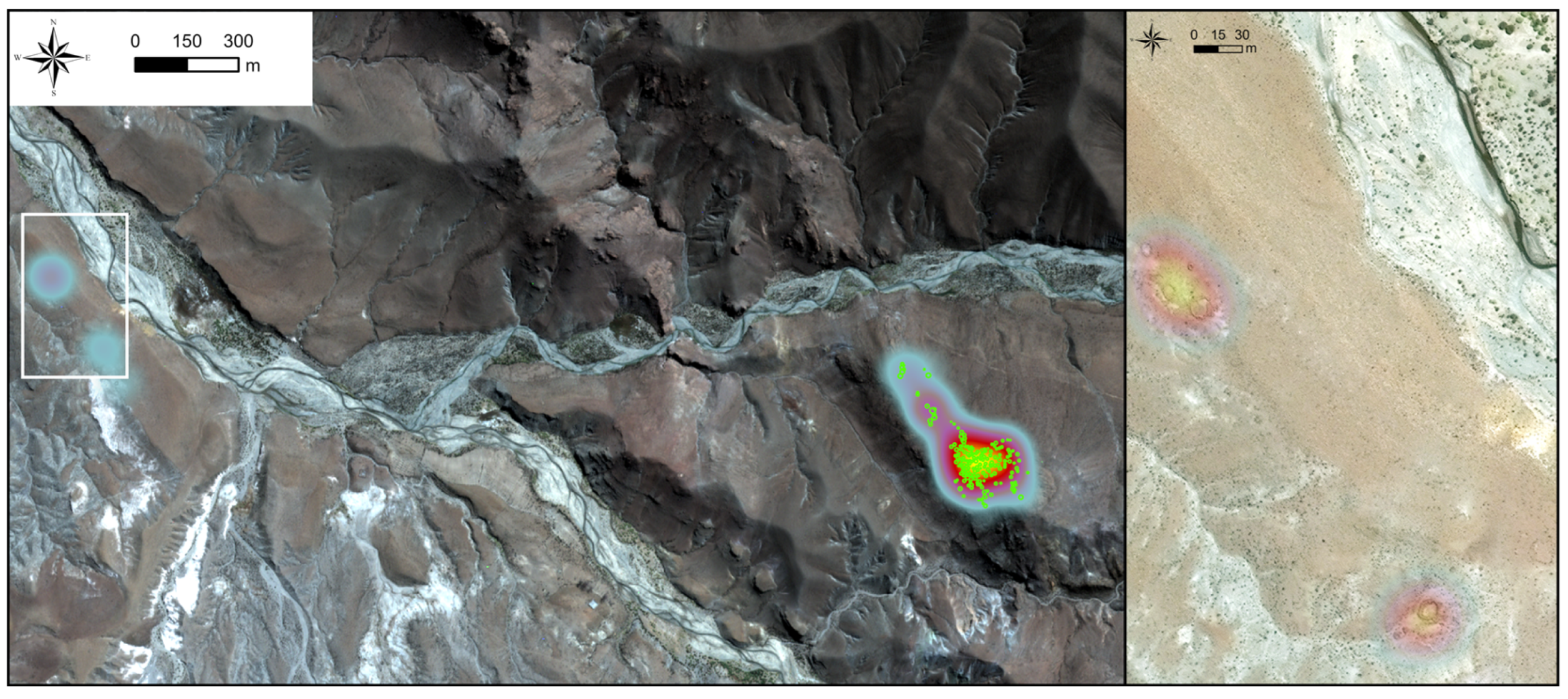
| Threshold | Identified Structures | % of Structures Identified | Non-Identified Structures | TP Grid Points | FP Grid Points | FN Grid Points | FP Area [m2] | FP Area (% of Test Area) | Precision | Recall | F1 score | MCC |
|---|---|---|---|---|---|---|---|---|---|---|---|---|
| 0.5 | 207 | 94% | 14 | 938 | 1197 | 209 | 43,092 | 0.49% | 0.44 | 0.82 | 0.57 | 0.60 |
| 0.55 | 205 | 93% | 16 | 918 | 1036 | 229 | 37,296 | 0.43% | 0.47 | 0.80 | 0.59 | 0.62 |
| 0.6 | 204 | 92% | 17 | 900 | 909 | 247 | 32,724 | 0.37% | 0.50 | 0.78 | 0.61 | 0.62 |
| 0.65 | 203 | 92% | 18 | 879 | 805 | 268 | 28,980 | 0.33% | 0.52 | 0.77 | 0.62 | 0.63 |
| 0.7 | 198 | 90% | 23 | 860 | 678 | 287 | 24,408 | 0.28% | 0.56 | 0.75 | 0.64 | 0.65 |
| 0.75 | 196 | 89% | 25 | 839 | 573 | 308 | 20,628 | 0.24% | 0.59 | 0.73 | 0.66 | 0.66 |
| 0.8 | 191 | 86% | 30 | 807 | 466 | 340 | 16,776 | 0.19% | 0.63 | 0.70 | 0.67 | 0.67 |
| 0.85 | 187 | 85% | 34 | 763 | 324 | 384 | 11,664 | 0.13% | 0.70 | 0.67 | 0.68 | 0.68 |
| 0.9 | 176 | 80% | 45 | 631 | 166 | 516 | 5976 | 0.07% | 0.79 | 0.55 | 0.65 | 0.66 |
| 0.95 | 94 | 43% | 127 | 152 | 17 | 995 | 612 | 0.01% | 0.90 | 0.13 | 0.23 | 0.34 |
Disclaimer/Publisher’s Note: The statements, opinions and data contained in all publications are solely those of the individual author(s) and contributor(s) and not of MDPI and/or the editor(s). MDPI and/or the editor(s) disclaim responsibility for any injury to people or property resulting from any ideas, methods, instructions or products referred to in the content. |
© 2025 by the authors. Licensee MDPI, Basel, Switzerland. This article is an open access article distributed under the terms and conditions of the Creative Commons Attribution (CC BY) license (https://creativecommons.org/licenses/by/4.0/).
Share and Cite
Castiello, M.E.; Landauer, J.; Saintenoy, T. Remote Sensing and AI Coupled Approach for Large-Scale Archaeological Mapping in the Andean Arid Highlands: Case Study in Altos Arica, Chile. Remote Sens. 2025, 17, 3499. https://doi.org/10.3390/rs17203499
Castiello ME, Landauer J, Saintenoy T. Remote Sensing and AI Coupled Approach for Large-Scale Archaeological Mapping in the Andean Arid Highlands: Case Study in Altos Arica, Chile. Remote Sensing. 2025; 17(20):3499. https://doi.org/10.3390/rs17203499
Chicago/Turabian StyleCastiello, Maria Elena, Jürgen Landauer, and Thibault Saintenoy. 2025. "Remote Sensing and AI Coupled Approach for Large-Scale Archaeological Mapping in the Andean Arid Highlands: Case Study in Altos Arica, Chile" Remote Sensing 17, no. 20: 3499. https://doi.org/10.3390/rs17203499
APA StyleCastiello, M. E., Landauer, J., & Saintenoy, T. (2025). Remote Sensing and AI Coupled Approach for Large-Scale Archaeological Mapping in the Andean Arid Highlands: Case Study in Altos Arica, Chile. Remote Sensing, 17(20), 3499. https://doi.org/10.3390/rs17203499






